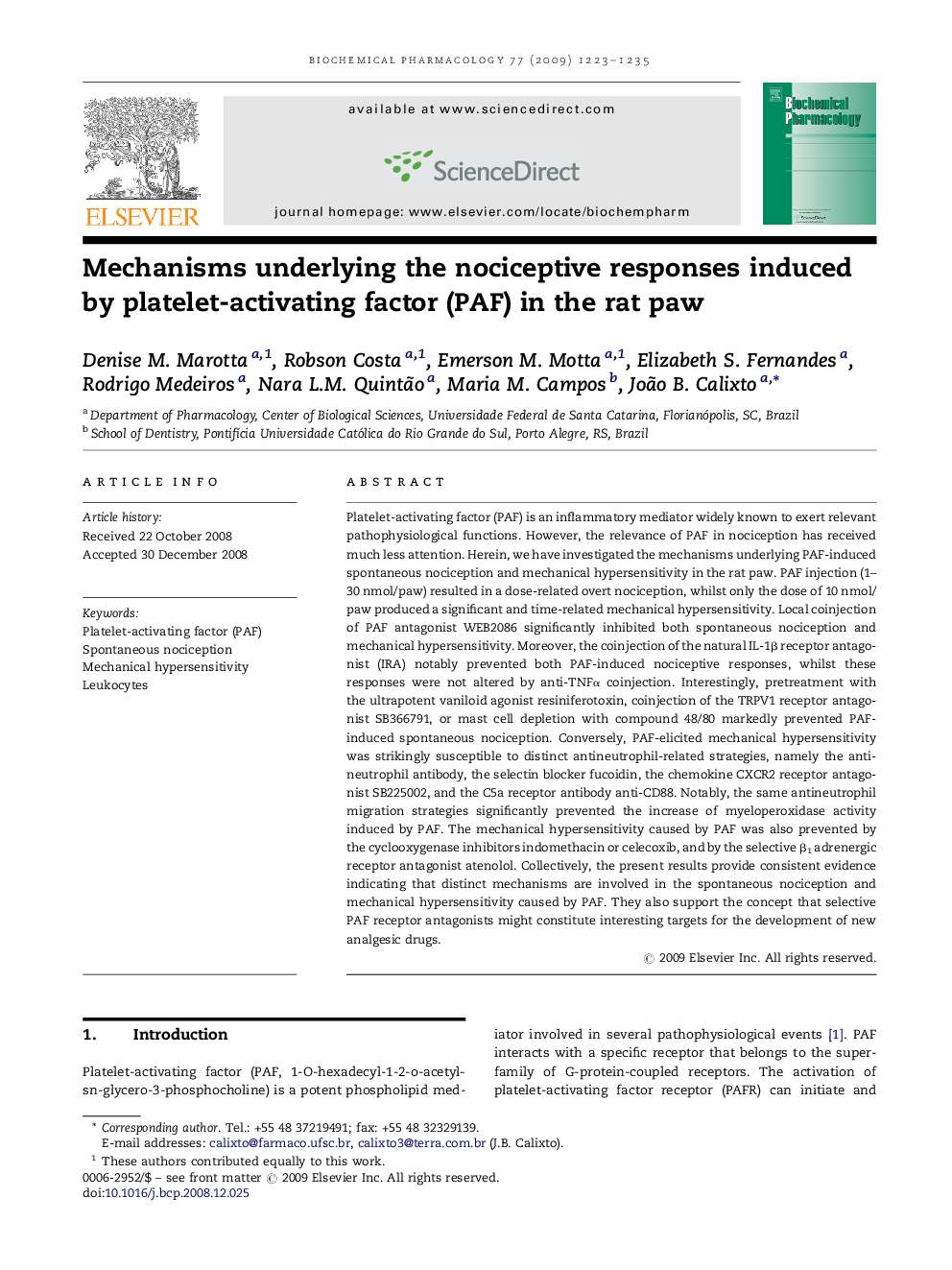| کد مقاله | کد نشریه | سال انتشار | مقاله انگلیسی | نسخه تمام متن |
|---|---|---|---|---|
| 2514799 | 1118485 | 2009 | 13 صفحه PDF | دانلود رایگان |

Platelet-activating factor (PAF) is an inflammatory mediator widely known to exert relevant pathophysiological functions. However, the relevance of PAF in nociception has received much less attention. Herein, we have investigated the mechanisms underlying PAF-induced spontaneous nociception and mechanical hypersensitivity in the rat paw. PAF injection (1–30 nmol/paw) resulted in a dose-related overt nociception, whilst only the dose of 10 nmol/paw produced a significant and time-related mechanical hypersensitivity. Local coinjection of PAF antagonist WEB2086 significantly inhibited both spontaneous nociception and mechanical hypersensitivity. Moreover, the coinjection of the natural IL-1β receptor antagonist (IRA) notably prevented both PAF-induced nociceptive responses, whilst these responses were not altered by anti-TNFα coinjection. Interestingly, pretreatment with the ultrapotent vaniloid agonist resiniferotoxin, coinjection of the TRPV1 receptor antagonist SB366791, or mast cell depletion with compound 48/80 markedly prevented PAF-induced spontaneous nociception. Conversely, PAF-elicited mechanical hypersensitivity was strikingly susceptible to distinct antineutrophil-related strategies, namely the antineutrophil antibody, the selectin blocker fucoidin, the chemokine CXCR2 receptor antagonist SB225002, and the C5a receptor antibody anti-CD88. Notably, the same antineutrophil migration strategies significantly prevented the increase of myeloperoxidase activity induced by PAF. The mechanical hypersensitivity caused by PAF was also prevented by the cyclooxygenase inhibitors indomethacin or celecoxib, and by the selective β1 adrenergic receptor antagonist atenolol. Collectively, the present results provide consistent evidence indicating that distinct mechanisms are involved in the spontaneous nociception and mechanical hypersensitivity caused by PAF. They also support the concept that selective PAF receptor antagonists might constitute interesting targets for the development of new analgesic drugs.
Journal: Biochemical Pharmacology - Volume 77, Issue 7, 1 April 2009, Pages 1223–1235